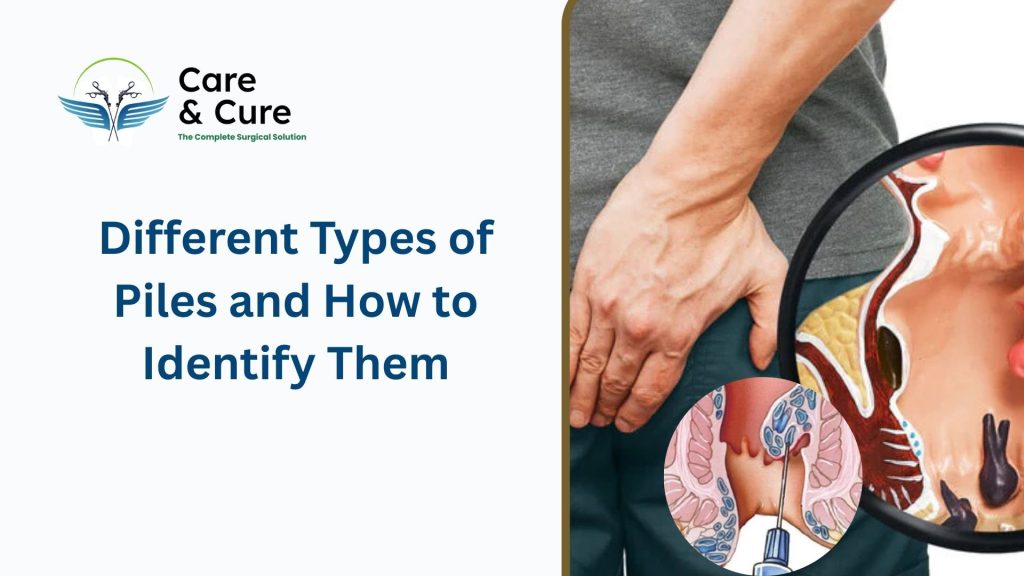
Let’s talk about something that many people experience but hardly anyone talks about openly — piles. Yep, I said it. Piles. Also known as hemorrhoids. If you’ve been dealing with itching, discomfort, or a bit of blood during your bathroom breaks, there’s a good chance that this might be the culprit.
As a General and Laparoscopic Surgeon, I see patients almost every day who come in quietly, a little embarrassed, wondering what’s going on with their bodies. And here’s the thing — there’s no shame in talking about your health. So let’s clear up the confusion around the different types of piles and help you understand how to identify what’s happening and when to seek help.
What Are Piles (Hemorrhoids)?
Piles are swollen veins in your rectum or around your anus — think of them as the body’s version of varicose veins, just in a very sensitive area. They can be caused by a variety of things like chronic constipation, straining during bowel movements, sitting for long periods (especially on the toilet), or even pregnancy.
Piles can be internal or external, and they can vary in size and severity. Sometimes they come and go on their own, and other times they stick around and need a bit of medical intervention.
Types of Piles
There are mainly four types of piles, and each has its characteristics. Let’s break them down:
1. Internal Piles
These develop inside the rectum. You usually can’t see or feel them because they’re tucked away where there are fewer pain-sensitive nerves. That’s why many people don’t even know they have them until they see a bit of bright red blood on the toilet paper or in the bowl after a bowel movement.
- Symptoms: Painless rectal bleeding, feeling of fullness, mucus discharge.
- Severity Levels:
- Grade 1: No prolapse, just bleeding.
- Grade 2: Prolapse during straining but goes back in on its own.
- Grade 3: Prolapse during straining and needs to be pushed back manually.
- Grade 4: Always prolapsed and can’t be pushed back.
The higher the grade, the more likely you’ll need a surgical procedure to treat it.
2. External Piles
These form under the skin around your anus. These are the ones that can hurt like crazy. You might feel a painful lump or experience itching and irritation. If a blood clot forms inside (called a thrombosed external hemorrhoid), it can be especially painful and swollen.
- Symptoms: Pain, swelling, a hard lump near the anus, itching, bleeding.
- Common Triggers: Heavy lifting, constipation, diarrhea, long hours of sitting.
You’ll usually notice these faster because they’re visible or easily felt during washing or sitting.
3. Thrombosed Piles
Thrombosed piles occur when a blood clot forms inside either an external or, rarely, internal hemorrhoid. The clot causes sudden, severe pain and swelling. It might look bluish or purplish under the skin, and it can be hard to the touch.
- Symptoms: Sudden intense pain, swelling, bluish discoloration, tender lump.
- Treatment: Might need drainage or surgical removal if the pain is unbearable.
This type of pile often needs quicker medical intervention.
4. Prolapsed Piles
This happens when internal hemorrhoids grow so large that they push out through the anus. It sounds worse than it is — and while it can be scary to see something coming out “down there,” it’s treatable.
- Symptoms: A soft lump protruding from the anus, bleeding, irritation, mild pain.
- Treatment Options: Lifestyle changes, medications, rubber band ligation, or surgery depending on severity.
How to Identify What Type You Have
Okay, so how do you know what you’re dealing with?
First off — don’t panic. Many piles look and feel worse than they are.
- If you’re bleeding but not in pain, It could be internal piles.
- If you have a painful lump near your anus — That’s likely an external or thrombosed pile.
- If something is coming out when you poop — You’re probably dealing with prolapsed internal piles.
However, bleeding from the rectum should never be ignored. Always get it checked to rule out other causes like fissures, infections, or even colorectal cancer.
Treatment Options
So now that you know the different types, what can you do about them?
Home Remedies
- High-fiber diet: Eat more fruits, veggies, and whole grains.
- Hydration: Drink plenty of water to soften stools.
- Warm sitz baths: Sitting in warm water can ease pain and irritation.
- Topical creams: Over-the-counter creams or ointments can reduce symptoms.
Medical Procedures
- Rubber band ligation: Bands are placed around the base of the pile to cut off the blood supply.
- Sclerotherapy: An Injection that shrinks the hemorrhoid.
- Infrared coagulation: A laser or infrared light to shrink tissue.
- Hemorrhoidectomy: Surgical removal — usually for large or persistent piles.
As a surgeon, I often recommend a procedure if the patient has recurrent symptoms or if home care isn’t enough.
When Should You See a Doctor?
If you’ve tried the home remedies and you’re still dealing with:
- Constant pain or bleeding
- A lump that’s not going away
- Difficulty sitting or going to the toilet
…then it’s time to book an appointment. You deserve to feel comfortable and pain-free.
Remember: early treatment = easier recovery.
